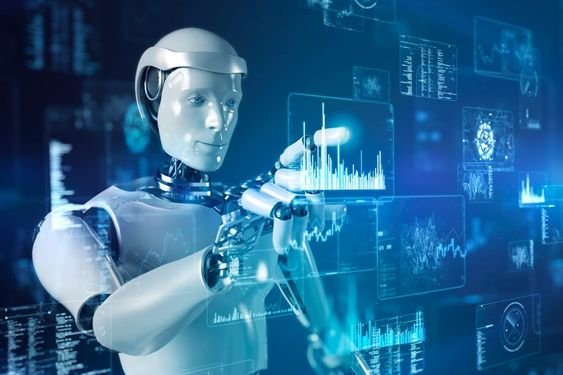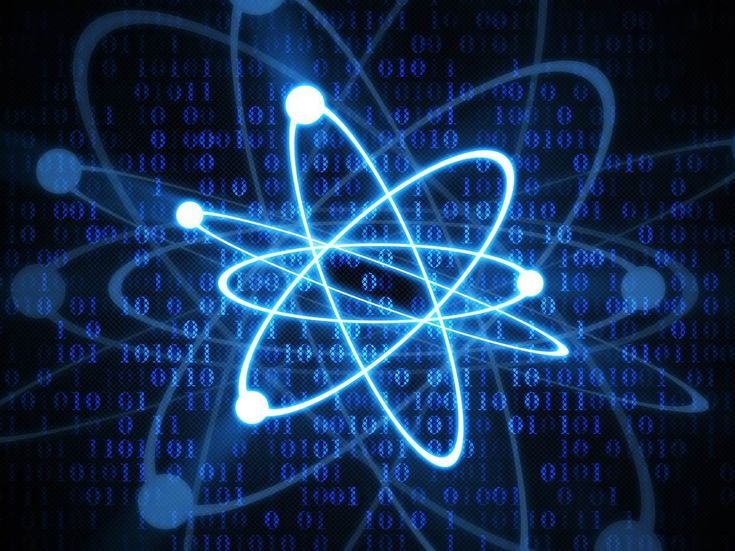
In the past few years, drone technology has rapidly evolved, moving from a niche hobbyist tool to a powerful device with applications across numerous industries. From capturing stunning aerial photographs to revolutionizing agriculture, drones have become an integral part of our modern world. As technology continues to advance, the future of drones looks even more promising, with potential impacts on everything from delivery services to environmental conservation. This article explores the future of drone technology, its applications, challenges, and the exciting developments we can expect in the coming years.
The Evolution of Drone Technology
Early Beginnings
Drones, also known as unmanned aerial vehicles (UAVs), were initially developed for military purposes in the early 20th century. They were used for reconnaissance missions, where they could gather intelligence without risking human lives. Over time, the technology advanced, and drones became more accessible to civilians. By the early 2000s, hobbyist drones had entered the consumer market, primarily used for photography and recreational flying.
Recent Developments
In the last decade, drone technology has seen significant advancements. Improvements in battery life, GPS technology, and camera quality have made drones more reliable and efficient. Additionally, the integration of artificial intelligence (AI) and machine learning has enabled drones to perform more complex tasks autonomously. This evolution has expanded their use beyond hobbyist activities, making them valuable tools in industries such as agriculture, construction, logistics, and even healthcare.
Key Areas of Future Growth
1. Delivery Services
One of the most anticipated applications of drones is in delivery services. Companies like Amazon and Google have been testing drone delivery systems for several years. The concept is simple: drones could deliver packages directly to customers’ doorsteps, reducing delivery times and costs.
Benefits
– Speed and Efficiency: Drones can bypass traffic and reach remote areas, ensuring faster deliveries.
– Reduced Carbon Footprint: By using drones, companies can reduce their reliance on traditional delivery vehicles, leading to lower carbon emissions.
– Cost Savings: Drones require less fuel and maintenance compared to trucks or motorcycles, potentially reducing delivery costs.
Challenges
– Regulation: One of the biggest hurdles for drone delivery is regulation. Airspace is heavily regulated, and integrating drones into it requires careful planning to avoid accidents and ensure public safety.
– Range and Battery Life: Current drones have limited range due to battery constraints. For widespread adoption, significant improvements in battery technology are necessary.
– Privacy Concerns: As drones fly over residential areas, concerns about privacy arise, with many people worried about being constantly monitored.
2. Agriculture
Agriculture is another field where drones are making a significant impact. Precision agriculture, where farmers use data-driven techniques to optimize crop yields, is becoming increasingly reliant on drones.
Applications
– Crop Monitoring: Drones equipped with multispectral sensors can monitor crop health, identify areas that need irrigation, and detect diseases early.
– Spraying: Drones can be used for spraying pesticides and fertilizers, ensuring even distribution and reducing the amount of chemicals used.
– Planting: Some drones are capable of planting seeds in a precise manner, which is especially useful in reforestation efforts.
Benefits
– Increased Efficiency: Drones allow farmers to cover large areas quickly, gathering data that would take hours or even days to collect manually.
– Cost Reduction: By using drones for monitoring and spraying, farmers can reduce labor costs and minimize waste.
– Sustainability: Precision agriculture helps farmers use resources more efficiently, leading to more sustainable farming practices.
3. Environmental Conservation
Drones are becoming vital tools in environmental conservation efforts. Their ability to access hard-to-reach areas and gather real-time data makes them invaluable for monitoring ecosystems and wildlife.
Applications
– Wildlife Monitoring: Drones can track animal movements, monitor populations, and even help in anti-poaching efforts.
– Forest Conservation: Drones are used to map forests, monitor deforestation, and assist in reforestation projects by planting trees in remote areas.
– Disaster Response: In the aftermath of natural disasters, drones can quickly assess damage, locate survivors, and deliver essential supplies.
Benefits
– Real-Time Data Collection: Drones can provide real-time information, allowing conservationists to respond quickly to environmental threats.
– Reduced Human Risk: By using drones in dangerous or inaccessible areas, the risk to human life is minimized.
– Cost-Effective: Drones can cover vast areas at a fraction of the cost of traditional monitoring methods, such as helicopters or ground patrols.
4. Urban Planning and Smart Cities
As cities continue to grow, urban planning becomes increasingly complex. Drones are emerging as valuable tools for urban planners, offering a bird’s-eye view of cities and enabling more efficient planning.
Applications
– 3D Mapping: Drones can create detailed 3D maps of urban areas, helping planners visualize infrastructure projects.
– Traffic Monitoring: Drones can monitor traffic patterns in real-time, providing data that can be used to optimize traffic flow and reduce congestion.
– Infrastructure Inspection: Drones are used to inspect bridges, buildings, and other infrastructure, identifying potential issues before they become critical.
Benefits
– Improved Planning: With accurate data from drones, urban planners can make better decisions regarding infrastructure development and land use.
– Cost Savings: Drones reduce the need for manual inspections and surveys, lowering costs and speeding up project timelines.
– Enhanced Safety: By inspecting infrastructure with drones, the need for workers to perform dangerous tasks at height is reduced.
5. Healthcare
In healthcare, drones are beginning to play a role in delivering medical supplies and providing emergency assistance.
Applications
– Medical Supply Delivery: In remote or disaster-stricken areas, drones can deliver essential medical supplies, such as vaccines, blood, and medicines.
– Emergency Response: Drones equipped with defibrillators or first-aid kits can be dispatched to assist in medical emergencies, potentially saving lives before paramedics arrive.
– Telemedicine: Drones can be used to deliver equipment for remote consultations, enabling doctors to provide care in areas without access to healthcare facilities.
Benefits
– Rapid Response: Drones can reach patients faster than traditional ambulances, especially in congested urban areas or remote locations.
– Accessibility: Drones can deliver medical supplies to areas that are otherwise inaccessible due to natural disasters or poor infrastructure.
– Cost-Effective: By reducing the need for human intervention in certain scenarios, drones can lower healthcare delivery costs.
6. Entertainment and Media
The entertainment and media industry has already embraced drones, particularly for capturing aerial footage in movies, TV shows, and sports events. The future holds even more exciting possibilities.
Applications
– Live Event Coverage: Drones can provide unique perspectives during live events, such as concerts, sports matches, and festivals.
– Virtual Reality (VR): Drones can be used to create immersive VR experiences, allowing users to explore environments from the air.
– Film and Television: Drones are revolutionizing cinematography, providing filmmakers with new creative possibilities for aerial shots.
Benefits
– Enhanced Creativity: Drones offer filmmakers and content creators new ways to capture footage, leading to more innovative storytelling.
– Cost Reduction: Drones are more affordable than traditional methods of capturing aerial shots, such as helicopters.
– Audience Engagement: The unique perspectives provided by drones can enhance the viewing experience, making content more engaging for audiences.
Challenges and Ethical Considerations
While the future of drone technology is promising, there are several challenges and ethical considerations that need to be addressed.
1. Regulation and Airspace Management
As drones become more prevalent, managing airspace will become increasingly complex. Governments and aviation authorities must develop comprehensive regulations to ensure the safe integration of drones into national airspace. This includes creating no-fly zones, establishing communication protocols, and setting standards for drone operations.
2. Privacy Concerns
The widespread use of drones raises significant privacy concerns. As drones fly over private property and capture images or videos, individuals may feel that their privacy is being invaded. Clear guidelines and regulations are necessary to protect privacy rights while allowing drones to operate effectively.
3. Security Risks
Drones can be used for malicious purposes, such as smuggling contraband, conducting surveillance, or even carrying out attacks. Ensuring the security of drone operations is crucial to prevent such activities. This may involve developing technologies to detect and neutralize unauthorized drones, as well as implementing strict licensing and monitoring systems.
4. Environmental Impact
While drones have the potential to reduce carbon emissions, their widespread use could have unintended environmental consequences. The production and disposal of drones, particularly their batteries, could contribute to electronic waste and pollution. Sustainable manufacturing practices and recycling programs will be essential to mitigate these impacts.
5. Job Displacement
As drones take over tasks traditionally performed by humans, there is a risk of job displacement. For example, delivery drivers, surveyors, and even some medical professionals may find their roles being replaced by drones. It will be important to create new job opportunities in emerging fields, such as drone maintenance and programming, to offset these losses.
The Role of Artificial Intelligence in the Future of Drones
Artificial intelligence (AI) is set to play a significant role in the future of drone technology. AI-powered drones will be able to perform more complex tasks autonomously, making them even more valuable in various industries.
1. Autonomous Navigation
AI will enable drones to navigate autonomously in complex environments, such as urban areas or dense forests. This will be particularly useful for delivery services, search and rescue missions, and environmental monitoring. AI algorithms can process data from sensors and cameras in real-time, allowing drones to avoid obstacles and make intelligent decisions.
2. Advanced Data Analysis
In the future, AI will enhance drones’ ability to analyze the data they collect. For example, in agriculture, AI-powered drones could not only capture images of crops but also analyze those images to detect diseases, predict yields, and recommend the best times for planting or harvesting. In environmental conservation, AI could help drones identify endangered species or monitor changes in ecosystems over time, providing valuable insights that can be used to protect biodiversity. This capability will make drones even more indispensable tools across various fields.
3. Improved Object Recognition
AI can significantly improve a drone’s ability to recognize objects and people, making them more effective in tasks such as search and rescue, surveillance, and security. For instance, in a search and rescue operation, AI-equipped drones could identify missing persons based on clothing color or heat signatures, even in dense forests or rugged terrain. In security applications, drones could recognize and track intruders or suspicious activities in real-time, alerting authorities immediately.
4. Swarm Technology
One of the most exciting prospects for the future of drone technology is the development of swarm technology. This involves coordinating multiple drones to work together as a team, similar to how a swarm of bees operates. Swarm drones could be used for large-scale operations such as agricultural monitoring, disaster response, or even military applications. For example, a swarm of drones could quickly survey a large disaster area, locate survivors, and deliver supplies to multiple locations simultaneously.
Future Challenges and Considerations
1. Ethical Implications
As drones become more autonomous and capable, ethical considerations will become increasingly important. For example, the use of drones in surveillance raises concerns about the potential for misuse by governments or private companies. There are also questions about the ethics of using drones in military applications, particularly in situations where AI makes life-or-death decisions without human intervention. Society will need to grapple with these issues and establish clear ethical guidelines for drone use.
2. Legal Framework
The rapid advancement of drone technology has outpaced the development of legal frameworks to govern their use. Currently, there are many gray areas when it comes to drone regulation, particularly around issues like airspace rights, privacy, and liability. Governments around the world will need to create comprehensive legal frameworks that balance innovation with public safety and privacy concerns. This may involve international cooperation to develop standardized regulations and protocols.
3. Technological Limitations
While drone technology has come a long way, there are still significant technological limitations that need to be addressed for widespread adoption. For instance, battery life remains a major constraint, limiting the range and duration of drone operations. Advances in battery technology, such as the development of more efficient and longer-lasting batteries, will be crucial. Additionally, improvements in communication technology will be necessary to ensure reliable, real-time control and data transmission, especially in remote or densely populated areas.
4. Public Perception and Acceptance
The widespread adoption of drone technology will also depend on public perception and acceptance. Many people still view drones with suspicion, particularly when it comes to issues of privacy and security. Public education campaigns that highlight the benefits of drones, along with transparent regulatory frameworks, can help build trust and ensure that drones are seen as a positive force in society.
The Global Impact of Drone Technology
1. Economic Growth
The drone industry is poised to become a major driver of economic growth in the coming years. As drones become more integrated into various industries, they will create new job opportunities and stimulate economic activity. According to some estimates, the global drone market could be worth over $40 billion by 2025, with significant contributions from sectors such as agriculture, construction, and logistics. Additionally, the growth of the drone industry will likely spur innovation in related fields, such as AI, robotics, and battery technology.
2. Environmental Sustainability
Drones have the potential to play a key role in promoting environmental sustainability. For example, in agriculture, drones can help farmers use resources more efficiently, reducing the need for water, pesticides, and fertilizers. In environmental conservation, drones can monitor ecosystems and wildlife, providing data that can be used to protect endangered species and combat deforestation. Moreover, as delivery drones become more common, they could reduce the need for traditional delivery vehicles, leading to lower carbon emissions.
3. Disaster Relief and Humanitarian Aid
One of the most promising applications of drone technology is in disaster relief and humanitarian aid. In the aftermath of natural disasters, drones can quickly assess damage, locate survivors, and deliver essential supplies such as food, water, and medicine. Drones can also be used to restore communication networks by providing temporary internet and mobile phone coverage in disaster-stricken areas. This capability could be a game-changer in humanitarian efforts, enabling faster and more effective responses to crises around the world.
4. Military and Defense
While the use of drones in military applications is controversial, it is likely to continue growing in the future. Drones offer several advantages in military operations, including the ability to conduct surveillance, gather intelligence, and carry out precision strikes without putting human lives at risk. However, the increasing use of drones in warfare also raises ethical and legal questions, particularly around issues of accountability and the potential for unintended civilian casualties. As military drone technology advances, it will be important to establish international norms and agreements to govern their use.
The Future of Drone Technology: Looking Ahead
As we look to the future, it is clear that drones will play an increasingly important role in our lives. From transforming industries to improving disaster response, drones have the potential to make a significant positive impact on society. However, realizing this potential will require addressing the challenges and ethical considerations associated with drone technology. Governments, businesses, and civil society will need to work together to create a framework that supports innovation while protecting public safety, privacy, and security.
1. Continued Innovation
The future of drone technology will be driven by continued innovation. Advances in AI, battery technology, communication systems, and materials science will enable drones to perform more complex tasks, operate for longer periods, and become more reliable and efficient. As drone technology evolves, we can expect to see new applications and use cases that we have not yet imagined.
2. Integration with Other Technologies
Drones will also become increasingly integrated with other emerging technologies, such as 5G networks, the Internet of Things (IoT), and blockchain. For example, 5G networks will enable faster and more reliable communication between drones and control centers, while IoT devices could allow drones to interact with other smart devices in their environment. Blockchain technology could be used to secure data collected by drones, ensuring its authenticity and integrity.
3. Expanding Accessibility
As drone technology becomes more affordable and accessible, we can expect to see wider adoption across various sectors. Small businesses, non-profits, and even individuals will be able to leverage drones for tasks such as photography, environmental monitoring, and delivery services. This democratization of drone technology could lead to new business models and opportunities, particularly in developing countries where access to traditional infrastructure is limited.
4. Societal Impacts
Finally, it is important to consider the broader societal impacts of drone technology. While drones have the potential to create new opportunities and solve pressing challenges, they also raise important questions about privacy, security, and the future of work. As drones become more integrated into our daily lives, society will need to navigate these issues and find ways to ensure that drone technology benefits everyone.
Conclusion
The future of drone technology is both exciting and full of potential. Drones are set to revolutionize industries, improve disaster response, and contribute to environmental sustainability. However, to fully realize the benefits of drones, it will be essential to address the challenges and ethical considerations that come with their widespread use. By fostering innovation, creating robust regulatory frameworks, and engaging with the public, we can ensure that drones become a positive force for change in the years to come. As we move forward, the sky is truly the limit for what drone technology can achieve.
ALSO READ: Protecting Personal Data in the Digital Age









